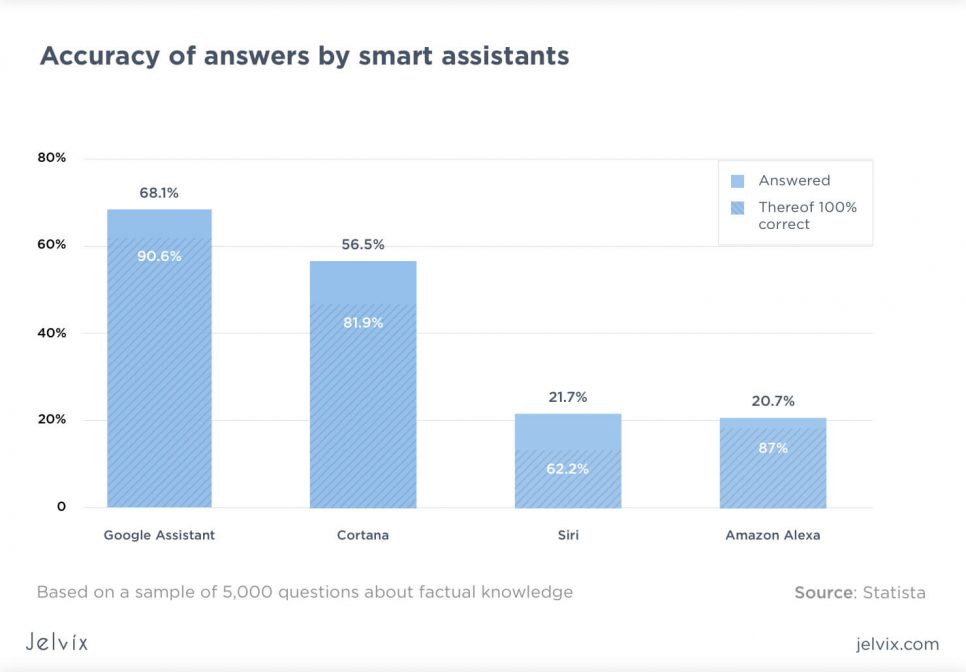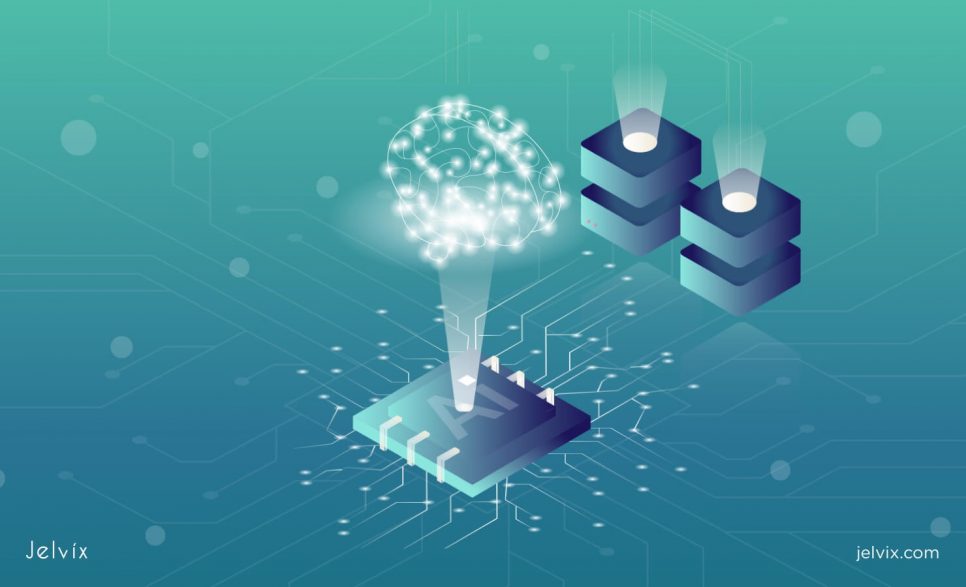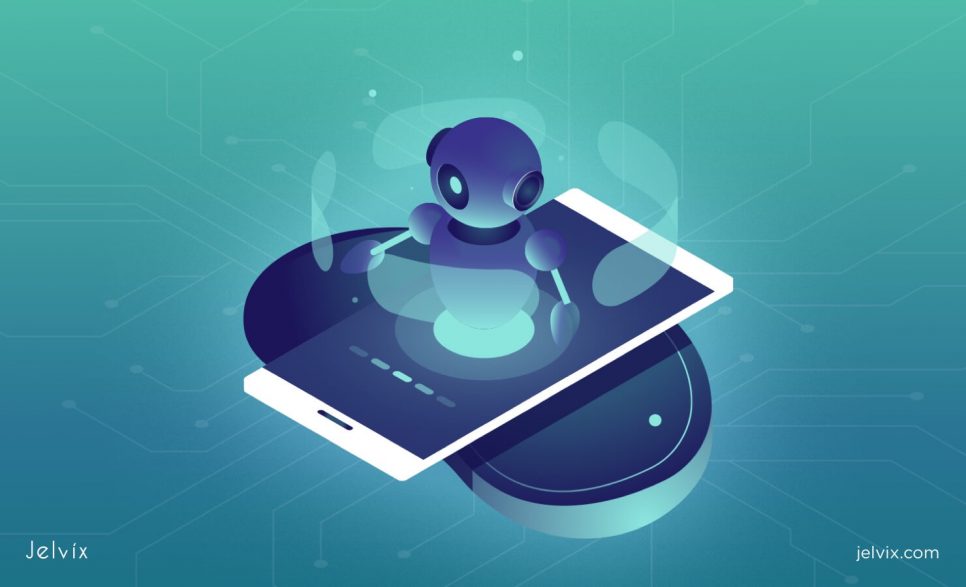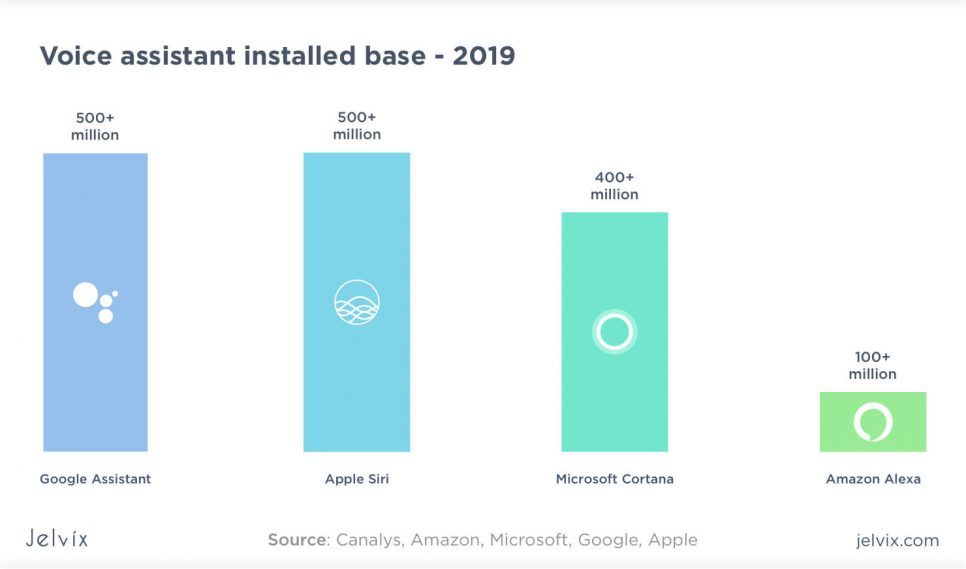A mobile device is a thing most of us start and finish our day with. A dozen apps installed on our smartphones are an everyday commodity which, alongside the buzzing development of the mobile industry, brings numerous opportunities to simplify our lives.
Currently, global IT development agencies try to focus on extending their knowledge and -skills on how to create a virtual assistant app. Inspired by the success of Apple and Google intelligent personal assistants, they look for the yet uncharted ways to build successful solutions. Lately, we have researched this topic.
In this article, we will tell you about the main points of Artificial Intelligence popularity and the most well-known examples. Also, you will understand how to make your own AI assistant in detail. So, let’s take a look.
Reasons to Develop an AI Assistant
Nowadays, such topics as Machine Learning and Artificial Intelligence are gaining more popularity. The key reason is self-learning robots are much smarter, faster, and more relevant in collecting, processing, and releasing information than other computers.
In 2025, the demand will continue to grow. Let’s take a look at the core factors that stimulate Artificial Intelligence development, specifically the AI assistants creation:
- Increasing user experience
Most virtual intelligent assistants provide a hands-free option that allows you to avoid interaction with the smartphone. No clicks, taps, or extra movements required. Everything you need is to launch an app and pronounce a particular command which will be processed by the machine. Afterward, you will get a rapid and relevant response.
According to the Pew Research Center Report, about 52% of Americans state that the main reason they use AI assistants is its hands-free option.
- Saving the valuable time
Tasks such as adding events to a calendar, getting news and weather reports, finding relevant accommodations and restaurants, and creating to-do lists take a lot of time. Personal AI assistants simplify and accelerate these processes by doing it on their own.
Moreover, users can remain focused on their primary tasks as they need only to launch an app and make a request.
Simply put, the opportunities of AI assistants simplify the life of end-users and provide much value to them as customers. These factors are key to business owners who want to create a useful and profitable product. Thus, it is one of the main reasons to develop an AI assistant nowadays.
How to Include a Voice Assistant in an App
Let’s now cover the main three ways of including AI software into your application. It will help you understand how to create an artificial intelligence program.
- Using custom APIs and additional tools
The approach is appropriate when you have a developed application, and you want to implement an existing AI solution. You need to take advantage of special APIs and additional tools. Each solution has its own instructions on how to integrate their software with your product.
For example, in order to implement Siri in your application, you need to have XCode 10 and macOS Mojave. The matter is that the opportunity of using Siri Shortcuts API appeared in the mentioned versions of tools.
- Using open-source services and APIs
This method is pretty similar to the previous one, but here you need to use the open-source services. For example, Google Codelabs provide you with a detailed guideline on how to add their voice interaction feature to your application. It includes 14 simple steps with a detailed description.
- Creating a voice assistant from scratch
This technique allows you to create an intelligent virtual assistant with custom features. For instance, you can implement useful functionality such as Voice/speech-to-text (STT), Text to Speech (TTS), Image Recognition, etc.
Afterward, you will need to integrate the built AI software with your application.
 The choice depends on your needs and goals. If you have a ready-made application and you just want to include an Artificial Intelligence solution, you can follow the first or second methods. In case you want to create a custom product with some particular features, partnering with a reliable development team, or having personal programming experience, the third approach will be an excellent choice.
The choice depends on your needs and goals. If you have a ready-made application and you just want to include an Artificial Intelligence solution, you can follow the first or second methods. In case you want to create a custom product with some particular features, partnering with a reliable development team, or having personal programming experience, the third approach will be an excellent choice.
Let’s examine each approach in greater detail to understand the pros and cons of each possible solution.
Famous Examples of AI Assistant Development
Well-known giants such as Google, Apple, and Microsoft have created personal assistance products that facilitate millions of people worldwide. According to Tractica, the approximate number of people using intelligent virtual assistants worldwide will exceed 1.8 billion users in 2021.
Here we provide you with a list of the most popular applications and cover their core features.
- Siri
Siri is communicative software support for every Apple device (obviously, runs only on iOS and macOS). It analyzes and processes the given requests of users and then provides relevant feedback.
This personal AI assistant features a speech-handling algorithm that allows users to assign tasks and ask questions verbally. The software also monitors users’ personal data, such as their location, contact list, calendar, notes, and so on, by accessing the installed Apple applications. This means that Siri returns the most relevant data based on personal information.
- Google Assistant
You can only use Siri on Apple devices, but what about the Android OS? Well, Google has taken care of it by launching Google Assistant. It is an artificial intelligence virtual personal assistant that provides almost the same functionality as Siri does. Google Assistant deals with web search, event scheduling, route optimization, etc. Google Voice Interaction API enables the software to handily understand the human voice.
The software was first presented at the annual Google I/O conference in 2016. It is considered to be the new version of Google Now, including a two-way conversation feature.
Let’s take a look at the overview comparison of Google Assistant and Siri, which provides general information about each software.
- Cortana
Cortana is virtual voice assistant software that includes Artificial Intelligence features. Microsoft created the application for devices such as Windows Phone 8.1, Microsoft Band, Windows 10, Android, and Xbox One. Recently, the company built an iOS-compatible version available on the App Store.
The software was initially presented during the Build conference in San Francisco in 2014. The virtual assistant was named after the main character of the Halo computer game series.
Cortana intelligent virtual assistant is aimed at foreseeing the user’s needs. If desired, there is an opportunity to provide access to such personal data as an e-mail address, search history, contact list, and so on. The application will use this information to provide the most relevant result in accordance with the user’s preferences. Cortana will replace the default search system and may be launched by pressing the Search button.
According to the Voicebot.ai research 2019, the number of Cortana users exceeds the point of 400 mln users worldwide.
- Alexa
Alexa is one of the most popular personal AI assistants created by Amazon in 2014. It was first utilized in Amazon Echo. Most IT companies began integrating this software with their products to provide voice interaction features.
This AI assistant is not connected to a particular device or operating system, unlike the previous company’s solutions. It functions as a separate system technically available on any device.
The popularity of the solution is pretty reasonable as the provided service, gadgets, and AWS cloud computing are closely interconnected. They create a unified information space that includes the top feature called voice control.
How to Develop an Artificial Intelligence Assistant: General Stages
So, how to make your own AI assistant? Firstly, generate your idea. It means you should have a well-thought-out and detailed vision of the final product, which will provide real value to your customers. At this stage, one of the most efficient solutions is to build a Minimum Viable Product (MVP). It gives you an opportunity to save time and funds by creating a working product quickly and making it scalable for further improvements.
Secondly, you need to find a relevant software provider who will take care of your preferences and end-users’ needs to create a valuable solution. Thus, you can find an experienced developer or a reliable team of software professionals. The key advantages of the latter option are the well-structured working process and a solid experience in creating such a solution type.
 Now, let’s take a closer look at the general stages of building an intelligent virtual assistant.
Now, let’s take a closer look at the general stages of building an intelligent virtual assistant.
Decide on Programming Language
Which programming language is used to develop artificial intelligence? According to the GeeksforGeeks Science Portal, the top 5 best languages to use for AI development are Python, R, Lisp, Prolog, and Java. For sure, the leading position belongs to Python as it is flexible, stable, and provides all the needed functionality for AI development.
For example, Python Wiki provides the page where you can find relevant and useful information regarding Artificial Intelligence development. Implementation of algorithms, programming engines, end-to-end platforms, libraries, and other toolkits are gathered in one place for your convenience.
Pick an API
There are several APIs that will serve your AI development needs:
- Dialogflow (Api.ai)
This API is an element of the Google platform. Its prominent feature is working with domains, which are collections of data used by Google agents. Those are the collections of data used by Google agents. The database contains gigabytes of encyclopedic information, so it would be extremely useful to utilize this tool for educational app development.
To get started with the API integration, you need only two things: “entities” and “intents”. Entities are the things that have similar characteristics that are represented by keywords. The intent is the relationship between the words of users and the application actions’ entries.
 The API also solves the issue with contextual queries, allowing you to understand a specific context based on previous interactions. Also, it recognizes requests in both text and voice files.
The API also solves the issue with contextual queries, allowing you to understand a specific context based on previous interactions. Also, it recognizes requests in both text and voice files.
Api.ai provides free and paid packages. The latter option allows you to run it on a private cloud internally.
- Wit.ai
This is a platform for answering user’s requests. It is a great analytical tool that enables the seamless interaction between the machine and a user. The platform is also able to convert voice commands into text. In fact, with a tool like this, you can develop a real alternative to the above-mentioned Siri.
 In 2015, the platform joined Facebook, and now it provides free access for public and private usage. Nevertheless, you will need to take into account their terms when developing your application.
In 2015, the platform joined Facebook, and now it provides free access for public and private usage. Nevertheless, you will need to take into account their terms when developing your application.
One of the main API benefits is that there is no need to develop intents. The platform allows developers to pick from a wide list of existing ones.
- Jasper
This API allows developers to build personal voice-controlled components. It is appropriate for the individuals who want to program the greatest part of Artificial Intelligence without external help and make the custom personal AI assistant single-handedly.
- IBM Watson
Created with the help of Java, C++, and Prolog, this API deals with translating voice into machine code. The machine perceives the code and searches for the relevant information on the defined topic. It combines both the principles of AI and Machine Learning and, as a result, provides advanced opportunities for building custom AI apps. Multitasking is one of the key features of the IBM Watson-based software.
Choose Additional Tools
Apart from special APIs, you can also take advantage of additional tools that will facilitate the development of your intelligent virtual assistant. Let’s cover them in detail.
- Amazon Echo
This is a tool able to search the query on the web, schedule events, and tasks, play sounds, and recognize a human speech. In fact, this is a combination of hardware and software equipped with sound sensors. It will definitely help you build your own AI assistant.
- Bixby
This application developed by Samsung is a high-level tool able to implement a personal approach in a brilliant way. It fulfills the tasks connected to interests and habits research. Like most of the AI apps, it has the voice and face recognition feature.
Learn more about the fundamental differences between Waterfall and Agile.
Conclusion
Summarizing the talk, when you are building an AI assistant, remember to test the functionality carefully and make sure everything works smoothly and without bugs. Keep in mind the importance of security and do additional research on how to protect data the best way possible.
Let your company take a step into the future today. Contact us, and we will help you create the best AI assistant that meets your preferences and provides value to end-users.
Need a qualified team?
Boost your business capacity with the dedicated development team.














